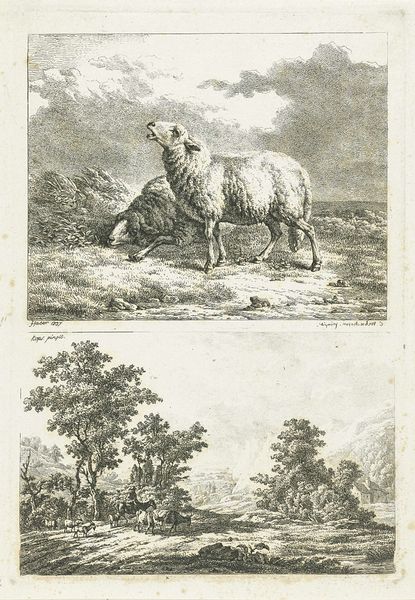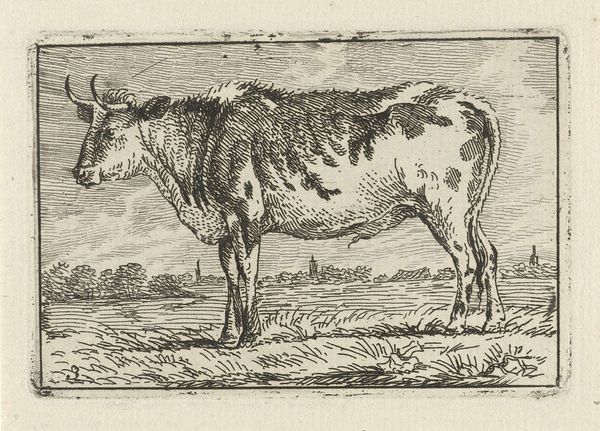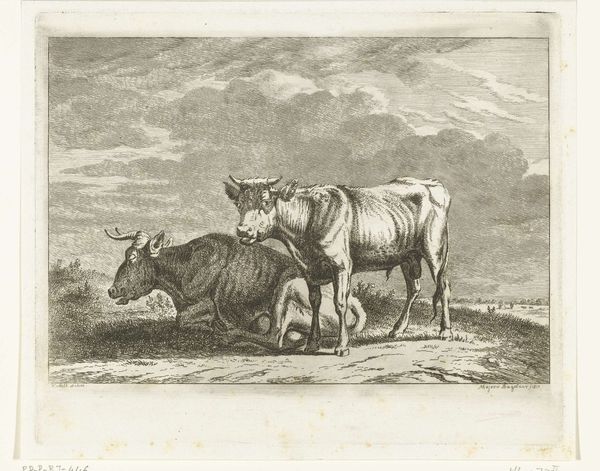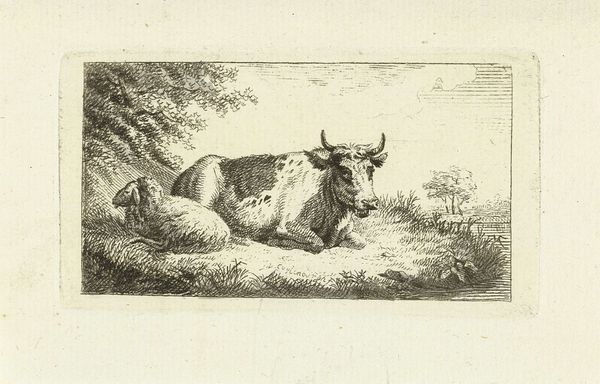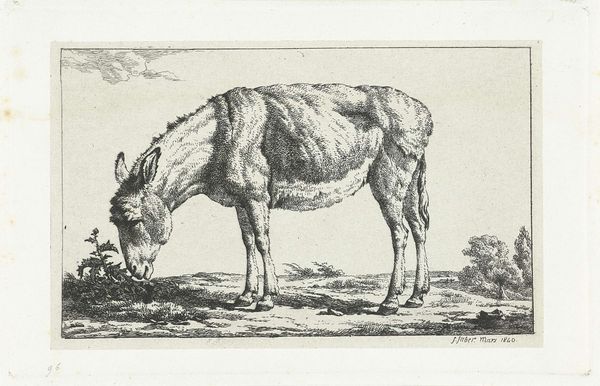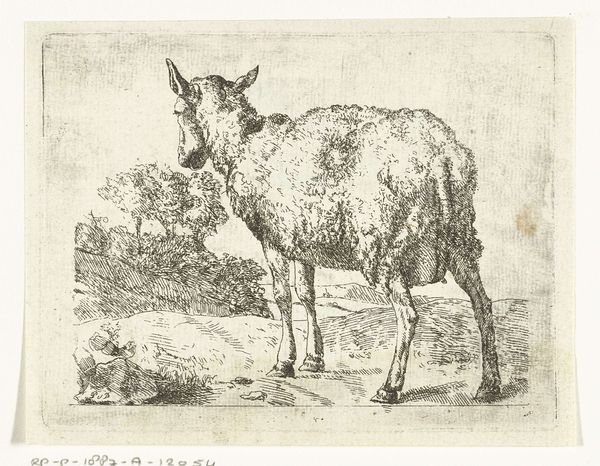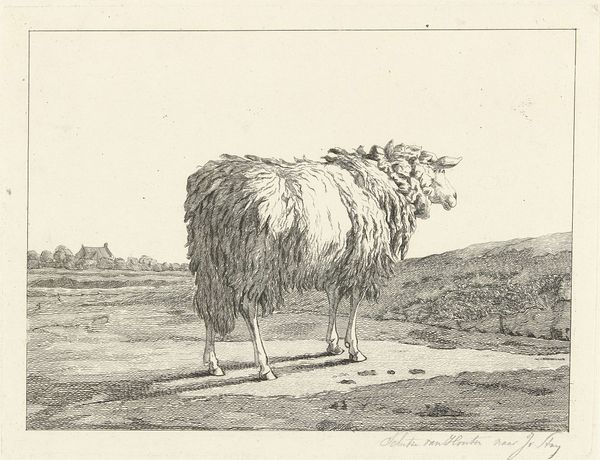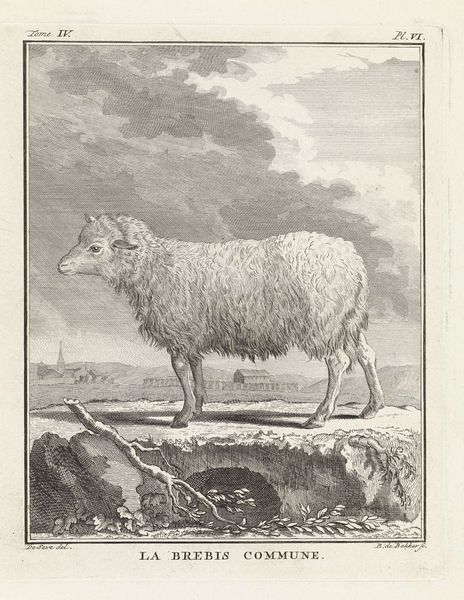
drawing, print, engraving
#
drawing
#
animal
# print
#
landscape
#
engraving
#
realism
Dimensions: height 90 mm, width 108 mm
Copyright: Rijks Museum: Open Domain
This etching of a standing sheep was made by Frédéric Théodore Faber in the early 19th century. It’s a fascinating example of printmaking, a process by which an image is incised into a metal plate, inked, and then transferred to paper. Look closely, and you’ll see how the material influences the appearance of the artwork. The fine lines, created by the etching needle, give texture to the sheep's wool and convey a sense of depth to the landscape. This wasn't a quick sketch; it required skill to create the composition through the manipulation of a metal plate. The print also speaks to the changing economic landscape of the time. Sheep were central to textile production, and images like this helped to disseminate information about breeds, contributing to the development of agricultural science and trade. Paying attention to materials and making processes allows us to fully understand the social and cultural significance of an artwork.
Comments
No comments
Be the first to comment and join the conversation on the ultimate creative platform.


